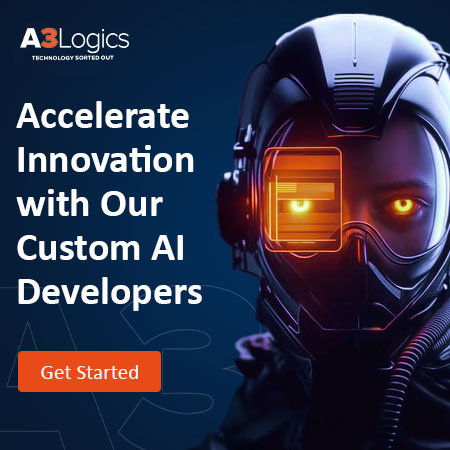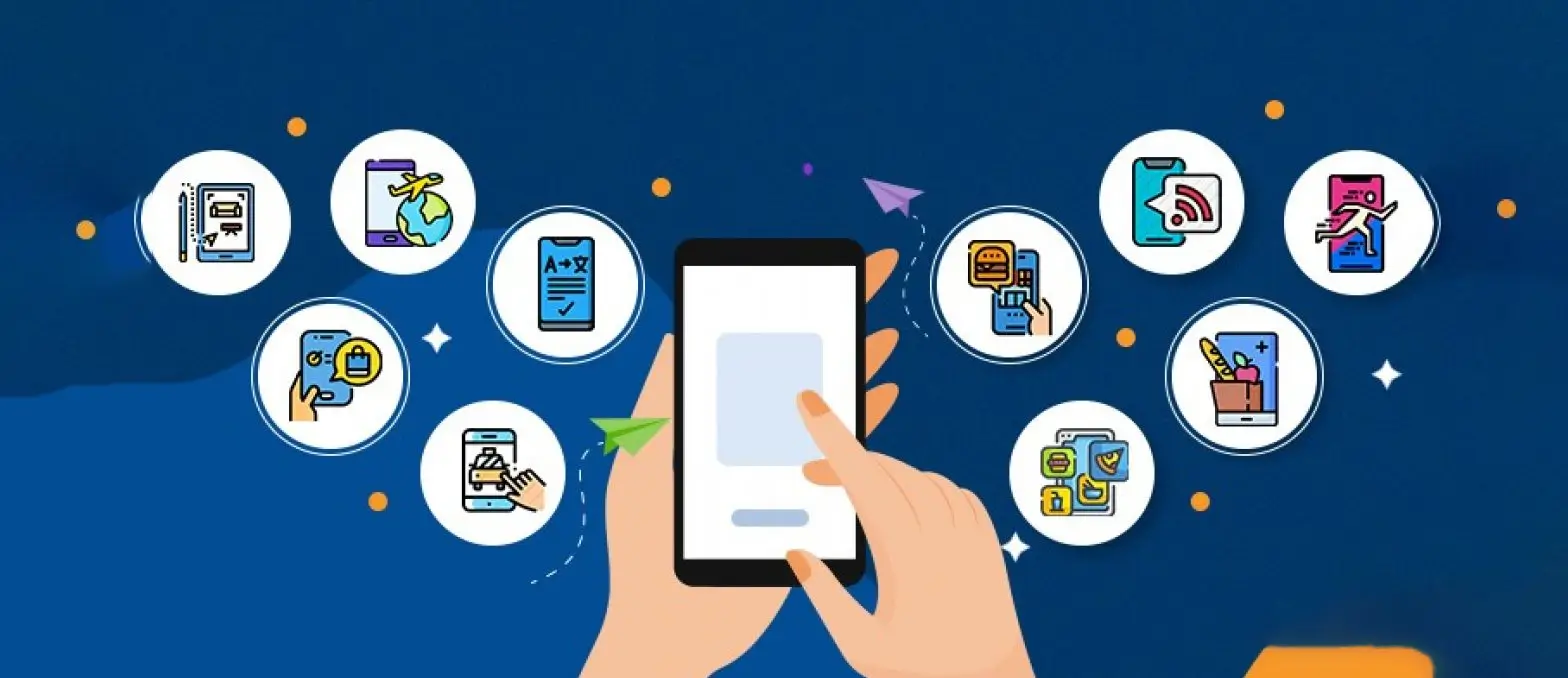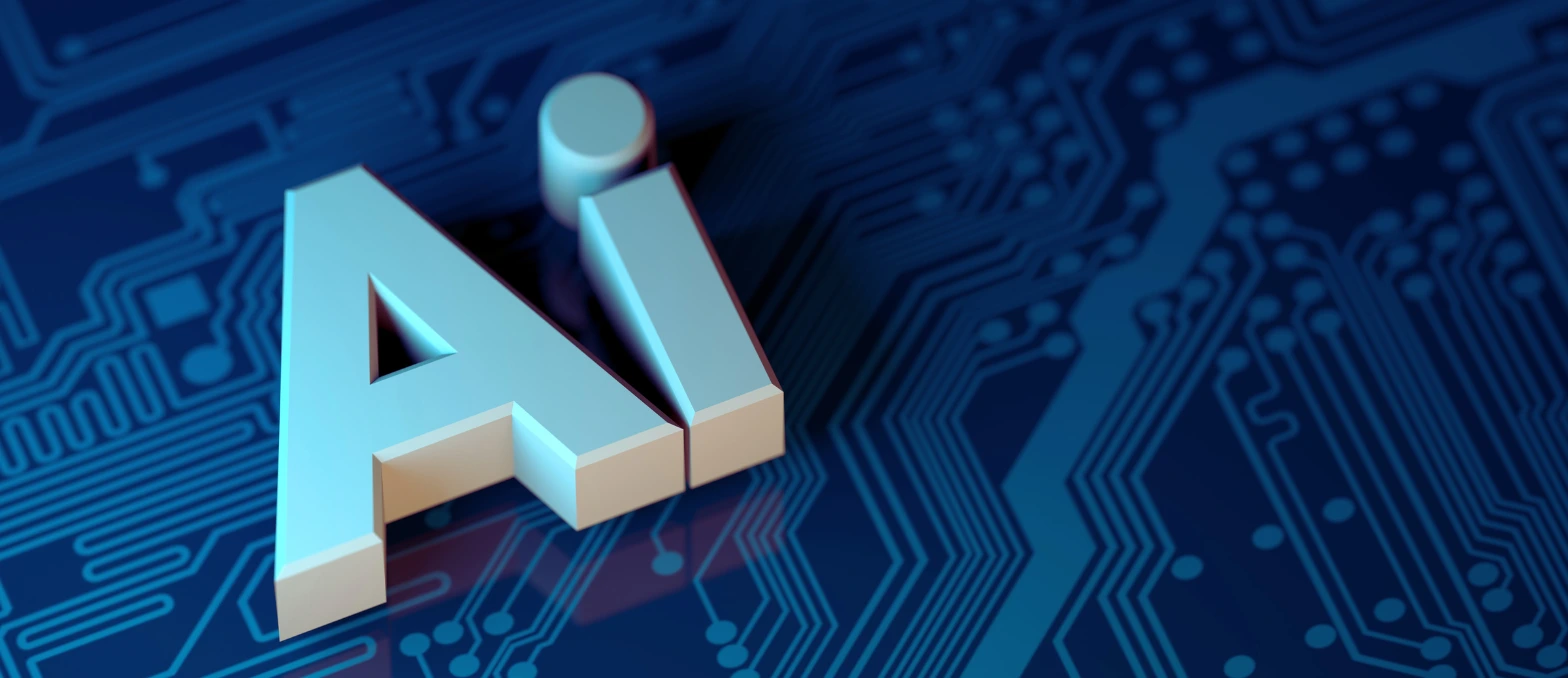Software development revolves around the ‘Software Development Model. This term describes the set of processes and methods for organizing, planning, and managing the creation of an information system. Essentially, it helps transform an idea into a functional software product.
Think of a software development model as a roadmap for managing and streamlining the development journey. It’s like a builder’s blueprint for a building, showing the stages, tasks, and methods for the entire software development life. The main aim is to increase productivity and ensure high-quality software is delivered on time and within budget.
These models are incredibly important. According to a report by the Project Management Institute, organizations that undervalue project management report an average of 50% more of their projects failing outright. This fact highlights how vital structured planning and execution are in software development success.
{{Content for Infographic}}
Table of Contents
What is the Importance of Choosing the Right Software Development Model?
Impact on Project Success
The choice of software development model greatly affects project success. A Standish Group study showed that only 29% of IT projects are successful, and 19% fail. This underlines the importance of picking the right model. The correct model can make processes smoother, improve team coordination, keep the project on track and within budget, and meet its goals.
For example, projects with clear requirements and scope may benefit from the Waterfall model, where development stages happen in sequence. However, projects with changing needs might fit better with Agile, which values flexibility and iteration.
Balancing Cost, Time, and Quality
Balancing cost, time, and quality in software development is a big challenge. The chosen model is key to this balance. A Project Management Institute survey found that 47% of failed projects suffer from poor requirement management, closely linked to the chosen development model.
Agile methods focus on adaptability and customer collaboration, often leading to higher quality and satisfaction. But, without careful management, they can cause scope creep and higher costs. In contrast, the Waterfall model’s strict structure can control costs and time but may sacrifice quality or relevance if needs change during the project.
A custom software development company in USA or elsewhere must consider these aspects when suggesting the best software development life cycle models. The right choice can mean a product that effectively meets market needs or misses the mark.
Selecting a software development model has major implications for a project’s success. It influences how well a team handles software development’s uncertainties and the cost, time, and quality balance. With fast-evolving technology and market demands, choosing and adapting the most suitable model is more important than ever.
Looking for a Tech Upgrade? Let’s Build Your Next Software Solution Together!
Top Popular Software Development Models for Your Project in 2025
Waterfall Model
The Waterfall Model in the software development life cycle is one of the earliest and simplest methods. It follows a linear sequential progression, where each phase starts only after completing the preceding one. This model is best suited for projects with well-defined requirements and where no changes are expected during development. Despite its decreased flexibility, the Waterfall model is still favored in certain scenarios due to its simplicity and clear milestones.
Iterative and Incremental
The iterative and incremental model breaks the project development into four distinct phases without requiring a fully mapped-out plan. Each phase encompasses the planning, design, creation, and delivery before progressing to the next. Initially, some requirements are applied in a series of iterations or increments, evolving the software progressively with enhanced features until the final version is achieved. This approach allows the team to assess and improve the product at the end of each cycle by identifying and addressing any shortcomings.
This model’s main benefit is its flexibility, allowing for changes at any stage. Despite the flexibility, major modifications are costly and take up significant time.
Extreme Programming (XP)
Extreme Programming (XP) is an agile methodology designed for building projects with efficiency, flexibility, and oversight. This approach allows for amendments to be made even after an iteration has commenced, with each iteration typically spanning one to two weeks.
The phases of XP are as follows:
- The Planning phase ranks user stories and segments them for better manageability.
- The Encoding phase dedicates efforts to evolving simple code into a functional prototype.
- The Testing phase entails the verification of all the small-scale implementations of user stories to ensure they align with customer needs.
- The Launch phase engages both customers and project managers to articulate the project’s expected benefits and strategic justification.
DevOps
The DevOps model is built on continuous innovation, agility, and the ability to scale, making it a robust framework for the software development lifecycle. It is particularly well-suited for larger, complex projects that require an intensified focus on quality assurance and testing. In contrast to client-focused interactions in the agile software development model, DevOps emphasizes collaboration and communication within the team, including managers and technical staff, rather than direct customer engagement.
Spiral Model
The spiral model of software development is highly centered around risk assessment and structures project development in cyclic, spiral-like phases. Typically, a spiral cycle runs for about half a year and is initiated by four key activities: meticulous planning, thorough risk analysis, crafting prototypes, and assessment of the previously delivered component. Following this evaluation, feedback from the user is solicited, informing the next spiral cycle.
V Model
The V-model expands upon the Waterfall model by integrating testing at each phase of the software development lifecycle. Hence, it’s also known as the verification and validation model. This results in a V-shaped process where each development step is associated with a corresponding testing phase.
Its primary benefit is its organized structure; each stage is addressed sequentially, simplifying understanding and application. The model’s clarity in deliverables and reviews at each phase makes it manageable.
The Rational Unified Process (RUP)
The Rational Unified Process (RUP) merges both iterative and linear methods in its structure. This model emphasizes creating efficient, top-notch software solutions while adhering to set budgets and timelines. Within the RUP, the software development journey involves four phases: inception, elaboration, construction, and transition.
Scrum
Scrum utilizes short, controlled bursts of activity known as sprints to advance project tasks, which are succinct, organized, and prioritized for straightforward tracking. Recognized as a leading agile framework, Scrum iterations typically span from two to four weeks, with each sprint beginning after thoughtful planning and review of the previous one. In a sprint’s duration, typically up to a month, the goal is to produce a version of the product ready for potential release.
Scrum’s advantage lies in its adaptability, allowing for ongoing requirement refinement. The methodology prioritizes clear communication, thereby clarifying expectations and facilitating goal achievement. However, the frequent need for daily updates and meetings can be time-intensive.
Kanban
Kanban is a suitable method for software applications requiring ongoing maintenance and enhancement. It benefits smaller delivery teams just as it is for Waterfall and can be applied in conjunction with various software development model. Kanban emphasizes the production of high-quality software over project management and planning. Skyscanner’s principal product manager, Rik Higham, has praised Kanban for its adaptability and ability to accommodate evolving demands and priorities.
Kanban Boards visually represent all aspects of a project, including tasks, volume, responsible individuals, and their current status. This visibility promotes more accurate prioritization of critical tasks. Unlike other methodologies, Kanban does not have a dedicated planning stage, which allows for ongoing integration of new requests for changes.
Shape Up Method
The Shape Up method is a newer model that’s gaining traction. It’s a development methodology introduced by Basecamp that combines elements of Agile and other methodologies. It focuses on fixed timeframes (cycles) for project completion, allowing teams to focus deeply on specific tasks.
Each software development model has unique features and is suitable for different projects. The choice depends on various factors like project requirements, team size, client involvement, and the nature of the project. As we move into 2025, staying informed about these models and understanding their application will be crucial for any software development team aiming for success.
What are the Key Factors to Consider the Best Software Development Model for Your Project?
{{Content for Infographic}}
Project Size and Complexity
The project’s size and complexity are key in choosing a software development model. For smaller, straightforward projects, traditional models like the Waterfall are effective. But for larger or more complex projects with changing needs, Agile methods are often better. The Chaos Report by Standish Group noted a 42% success rate for Agile projects, compared to 26% for Waterfall. This shows the need to match the project’s nature with the right development model.
Team Dynamics and Expertise
The development team’s composition and skills are also crucial. A team skilled in Agile might find the Waterfall model’s strict structure challenging. The team’s location, whether together or spread out, also matters. Agile, focusing on teamwork and communication, works well for geographically diverse teams. A VersionOne study reported that 81% of respondents saw better team interaction and productivity with Agile, highlighting the role of team dynamics in choosing a model.
Client Involvement and Feedback Mechanisms
Client participation is another important factor. Agile models encourage ongoing client engagement, which is useful for projects needing regular feedback and changes. This is especially true for custom software development for startups, where client needs often change quickly. In contrast, models like Waterfall suit projects with clear scopes and less client interaction.
Risk Management and Flexibility
Finally, the ability to manage risks and stay flexible is key. Projects in dynamic fields like IoT consulting services need a model that can adapt to new technologies and shifting market needs. Agile’s iterative approach allows for regular risk reassessment and adjustments. Alternatively, models like the Spiral, focusing on risk analysis, might be better for projects with many unknowns or high risks.
When choosing a software development model, consider the project’s size and complexity, team dynamics and expertise, client involvement level, and the need for risk management and flexibility. The right model aligns with these aspects, ensuring efficient and effective project execution, leading to a successful outcome. The aim is to finish the project and create a product that meets or surpasses expectations.
Empower Your Business with Cutting-Edge Software. Request a Free Consultation Today!
Detail Comparative Analysis of Software Development Models
| Software Development Models | Cost Estimation | Speed of Development | Frequency of Delivery | Likelihood of Bugs | Application Complexity | Current Trend |
|---|---|---|---|---|---|---|
| Waterfall | Elevated (>$150k) | Prolonged (12 months) | Single iteration | Possible functional issues | Moderately complex | Lesser known |
| Spiral | Moderate (<$150k) | Intermediate (6 months) | Periodic (Monthly) | Potential for minor issues | Moderately complex | Medium |
| V-model | Elevated (>$150k) | Prolonged (12 months) | Single iteration | Potential for minor issues | Extensive applications | Medium |
| Iterative and Incremental | Diverse ($10k-$150k) | Rapid (3-6 months) | Regular (Weekly-Monthly) | Potential for minor issues | Wide-ranging complexity | Prominent |
| Rational Unified Process (RUP) | Moderate (<$150k) | Intermediate (6 months) | Single iteration | Potential for minor issues | Moderate without complex logic | Medium |
| Extreme Programming (XP) | Diverse ($10k-$150k) | Intermediate (6 months) | Regular (Weekly-Monthly) | Potential for minor issues | Moderately complex | Lesser known |
| Scrum | Lower end (<$10k) | Rapid (3 months) | Frequent (Weekly) | Possible functional issues | Wide-ranging complexity | Prominent |
| Kanban | Moderate (<$150k) | Continuous | Regular (Weekly-Monthly) | Potential for minor issues | Wide-ranging complexity | Prominent |
| DevOps | Elevated (>$150k) | Continuous | Regular (Weekly-Monthly) | Potential for minor issues | Extensive applications | Growing |
| Shape Up | Moderate (<$150k) | Rapid (3 months) | Frequent (Weekly) | Potential for minor issues | Moderately complex | Lesser known |
Innovate, Automate, and Excel with A3logics Custom Software Development Services
What are the Modern Software Development and Industry Trends in 2025?
In 2025, the software development scene is changing fast, thanks to new tech and market shifts. Big trends like AI use and focusing on security are reshaping how we make software. This is key for anyone involved in custom software development consulting or digital transformation, especially in healthcare.
- AI and Machine Learning Integration: AI and Machine Learning are big in software now. They’re making software smarter and more efficient. For example, AI can find coding mistakes, do testing, and sometimes even write code. This is a super important digital transformation in healthcare, where AI helps with patient care and figuring out diseases. A Gartner study says by 2025, over 30% of CIOs will see AI as a main thing to invest in. This shows AI’s growing role in how we develop software.
- The Shift Towards Microservices Architecture: The move to a microservices architecture is growing. This means making a big app as a bunch of small parts, each working independently. It’s flexible, letting you update parts quickly without messing up the whole app. This approach is key in custom software development consulting. Clients want systems they can scale and rely on. According to an O’Reilly survey, over 30% of big companies are now using microservices.
- Increased Emphasis on Security and Compliance: In 2025, there will be more focus on security in software. DevSecOps is about adding security into the whole software-making process. This is a super important digital transformation in healthcare, where keeping data safe and following rules like HIPAA matter greatly. MarketsandMarkets thinks the healthcare cybersecurity market will hit $35.3 billion by 2028. This shows how crucial it is to keep healthcare data and systems safe.
How do you Future-Proof Your Software Development Approach?
- Embracing Flexibility and Scalability: First, your software development model must be flexible and scalable. This means it should adapt to changes easily. This is crucial in custom software development outsourcing, where client needs can change quickly. Scalability ensures your software can grow, handling more users, data, or transactions.
- Continuous Learning and Adaptation: Tech is always changing, with new tools and methods coming up. To keep up, your team should always be learning and adapting. Encourage them to stay up-to-date with the latest tech trends. In digital transformation services, this ongoing learning is even more vital. McKinsey & Company says rapid digital changes in industries need teams to be agile and adapt to new tech and working methods.
- Integrating Emerging Technologies: Using new tech in your software development can give you an edge. AI, blockchain, and IoT are reshaping software development. For example, AI can automate tasks, improve testing, and predict trends.
Future-proofing your software approach involves being flexible and scalable, constantly learning, and using new tech. These steps keep your software development effective, no matter how tech changes. For those in software development outsourcing and digital transformations, staying ahead is key for long-term success.
How do You Select the Best Custom Software Development Service Provider in 2025?
In 2025, the focus is on advanced tech like Artificial Intelligence in software development. The right choice can make or break your project. Let’s look at what to consider.
{{Content for Infographic}}
Criteria for Choosing a Service Provider
When picking a custom software service, consider several things to find the best fit for your project.
- Expertise and Experience: Find someone with a strong background in your project’s tech or industry. If you’re doing something with AI, pick a provider known for AI projects.
- Portfolio and Case Studies: Check their past work to gauge their ability and quality. A varied portfolio shows they can handle different projects.
- Technical Skills and Resources: They should have the skills and tools needed, including knowledge of current software models and new tech like AI and machine learning.
- Communication and Collaboration: Clear communication and teamwork are vital. Choose a provider who values this.
- Cost and Value: Cost matters, but it’s not everything. Think about the overall value they bring. Sometimes, paying more upfront means better quality and savings later.
The Role of Customer Reviews and Testimonials
Reviews and testimonials are crucial. They tell you about the provider’s reliability, work quality, and customer service. Positive feedback is a good sign, especially from clients with similar projects. A BrightLocal study showed that 87% of consumers read online reviews for local businesses in 2020. This trend is also true in B2B, where testimonials can greatly influence your choice.
Ensuring Alignment with Your Project Needs
The provider must fit your project needs. This includes:
- Understanding Your Needs: They should get your project goals, audience, and specific needs. This is especially important for projects with Artificial Intelligence in software development.
- Adapting to Changes: Software development changes fast. Pick a provider who can adapt to new tech and project changes.
- Quality Assurance and Support: Ensure they have solid quality checks and offer good support during and after the project.
- Cultural Fit: Their culture should match your company’s. A good cultural fit helps with collaboration and project success.
Picking the right custom software development service in 2025 means looking at expertise, reviews, cost, and how well they fit your project. By carefully evaluating these, you can find a provider that meets your current needs and is ready for future tech changes, ensuring your project’s long-term success.
Ready to Build? Let’s Create Your Software Solution Today!
Evaluating the Impact of Remote Work on Software Development Model Choices
The shift to remote and hybrid work has changed our software development. Enterprise software development companies are rethinking their model choices to fit this new world.
Adapting to the Rise of Remote and Hybrid Teams
Moving to remote work means we must rethink the old software development methods. Models that worked well when everyone was in the same place might not work remotely. Take the Agile model, for example. It’s big on teamwork and face-to-face chats, but that’s harder when everyone’s spread out.
Enterprise software development companies are tweaking Agile to work for remote teams. This means using digital tools for teamwork and changing Agile meetings to work online. The goal is to keep Agile’s core – being flexible, always getting better, and focusing on the customer – while fitting into the remote work world.
We must also consider time zone differences and cultural diversity in remote teams. Software development models need to be open and flexible for these things. This might mean not always talking in real-time and letting team members in different places have more say.
Best Practices for Remote Collaboration in Software Development
Working well remotely in software development needs a few key practices:
- Clear Communication: Set up good ways to talk, like Slack, Microsoft Teams, or Zoom, for regular updates. Everyone needs to know the project’s goals, deadlines, and what they should do.
- Tools for Teamwork: Use tools like Jira, Trello, or Asana. These help track progress, manage tasks, and let everyone see what’s happening.
- Feedback and Reviews: When we’re not in the same place, it’s key to talk often about how things are going. This can be through sprint reviews, reviewing what we did, or constantly integrating and deploying. This helps catch problems early and keep the project moving right.
- Strong Team Culture: Build a remote work culture that values trust, responsibility, and including everyone. Try virtual team-building and casual online meet-ups.
- Training and Support: Ensure everyone knows how to use remote work tools and practices. This is important for teams used to being in an office.
- Security and Compliance: We must keep things secure when working remotely, especially with sensitive data. Use secure access, VPNs, and regular security checks.
The rise of remote work has changed how we choose and use software development models. Enterprise software development companies must adjust their ways to fit remote work while still being efficient and productive. By focusing on clear communication, using the right tools, and building a solid remote work culture, software teams can do well in this new setup and keep making great software.
Sustainability and Ethical Considerations in Software Development Models
In our tech-driven world, sustainability and ethics in software development are crucial. This is especially true for fintech, where software companies play a big role in shaping financial behaviors and economies.
Integrating Green Computing Principles in Development Models
Green computing is all about eco-friendly computing. It’s getting big in the software development model. For a fintech software development company, this means making software that’s good at its job and energy-efficient.
- Energy-Efficient Coding: Developers are now writing code that needs less power. This means making algorithms and data structures more efficient and treating energy use as important as speed.
- Cloud Optimization: Since cloud computing is huge in software development, making it more energy-efficient is key. This includes using cloud services powered by renewable energy and making applications that use cloud resources wisely.
- Sustainable Development Practices: Using existing hardware to the fullest and promoting virtualization are ways to practice sustainable development.
- Lifecycle Assessment: Looking at the whole life of software – from making it to using and ending it – helps find and reduce environmental impacts at each stage.
Ethical Implications and Social Responsibility in Software Development Choices
Ethics and social responsibility are getting more attention in software development. For fintech software companies, this means creating fair and inclusive software that doesn’t add to biases or inequality.
- Data Privacy and Security: Fintech apps deal with sensitive financial data. Keeping this data safe and private is a big deal. This means following strict data protection rules and having strong security.
- Inclusivity and Accessibility: Making software that everyone can use, no matter their abilities, is an important ethical point. This includes designing easy-to-use interfaces for people with different disabilities and ensuring no group is left out.
- Transparency and Accountability: Users must understand how fintech software makes financial decisions. This means being clear about how algorithms work.
- Avoiding Bias: Keeping AI and machine learning in fintech software free from biases is crucial. This involves using diverse data to train these algorithms and checking them regularly for bias.
Adding sustainability and ethics into the software development model is essential today. Adopting these principles for fintech companies means their products are innovative, efficient, responsible, and sustainable. This helps them contribute positively to society and the environment.
Leveraging Big Data and Analytics in Software Development Decision-Making
In software development today, big data and analytics are changing the game. This is important in healthcare, where software companies are challenged to make complex, critical applications.
Data-Driven Insights for Model Selection
Choosing the right software development model is a big decision that affects project success. Big data and analytics offer insights to help make this choice.
- Analyzing Project Requirements: By looking at data from past projects, healthcare software development companies can spot trends. This helps them see which models, like Agile, work best in certain situations, like when a project needs to change often.
- Understanding Team Dynamics: Big data also sheds light on team performance. Analytics can show which team setups and workflows are most effective, guiding the choice of a development model that fits the team’s style.
- Risk Assessment: Data helps identify and tackle potential project risks. Analyzing past similar projects lets companies foresee challenges and pick a model that best handles these risks.
Predictive Analytics to Enhance Outcomes
Predictive analytics uses data, stats, and machine learning to guess future outcomes based on past data.
- Forecasting Project Success: This can predict which development model might work best for a healthcare software development company, considering compliance and data security.
- Customizing Development Approaches: Predictive analytics tailors development to specific project needs. It looks at timelines, budgets, and goals to align the development model with project objectives.
- Continuous Improvement: Big data and analytics create a cycle of ongoing improvement. Companies can constantly add new data to refine their methods, leading to better decisions and more successful projects.
Using big data and analytics in software development, especially for model selection and improving project results, is crucial for modern companies. This approach leads to more informed, efficient, and effective development for healthcare software development firms with high risks. As data-driven decision-making grows, integrating these technologies in software processes will become standard, driving innovation and quality in the field.
Transform Your Software Vision into Reality – Book A 30 Minutes Free Consultation!
Conclusion
As we conclude our look at the software development model, it’s important to think about what we’ve learned and what’s next for these models. The world of software development keeps changing, and staying up-to-date is crucial.
Our journey through different software development models shows a varied and changing field. From classic models like Waterfall to more adaptable ones like Agile and DevOps, each has pros and cons. The right model depends on factors like project complexity, team dynamics, client needs, and the need for flexibility and growth.
A big lesson is matching the model to the project’s specific needs. What works for one project might not suit another. Understanding each project’s requirements, challenges, and aims is key before choosing the best development method.
The Software development model seems to be moving towards more combined and adaptable methods. The growth of AI and machine learning will likely change these models, making them more forward-thinking and efficient. We might see models that fit current tech trends and can adapt to future changes.
AI in software development is especially exciting. It could automate routine tasks, improve testing, and improve software quality. This might lead to new models that mix traditional methods with advanced AI features.
Software development models are always evolving, offering chances for new ideas and improvements. As we go forward, keeping an open mind and being ready to adapt is crucial. Whether you’re a developer, project manager, or involved in any way, keeping up with these changes is key to doing well in the future of software development.
Are you ready for the future of software development models with A3Logics? Let’s go on this journey together, discovering new opportunities and pushing the limits of what we can do. Join us in defining the future of software development!
Frequently Asked Questions!
1. What is the most suitable software development model for small businesses in 2025?
For small businesses in 2025, Agile is often the best choice. Its flexibility and iterative approach let small teams quickly adjust to market changes. They can deliver parts of the project in sprints, leading to faster results and quicker reactions to customer feedback. Agile is great for small businesses needing to change strategies fast.
2. How does the choice of a software development model impact the overall cost of a project?
The development model chosen can greatly affect project costs. Traditional models like Waterfall might start cheaper but can cost more if big changes are needed later. Agile might cost more initially, but it can save money by reducing the need for expensive changes later. Matching the project’s needs with the most cost-effective model is crucial.
3. Can a project switch software development models midway?
Changing software development models mid-project is tough but doable. It needs careful planning and thought about how it will affect the project. Switching might be needed if the current method isn’t working or needs to change.
4. What are the risks associated with the wrong choice of a software development model?
Choosing the wrong model can lead to delays, higher costs, lower quality, or even project failure. A rigid model like Waterfall might not work for a project with changing needs. And using Agile for a project needing strict steps and compliance can cause issues.
5. How do Agile methodologies adapt to changing project requirements?
Agile is built to adapt to changing project needs. It uses regular sprints and feedback to keep evolving. After each sprint, the team looks at what was done and what can be improved. This lets Agile teams quickly adjust to new requirements, priorities, or market changes.






